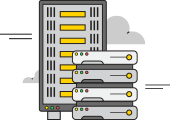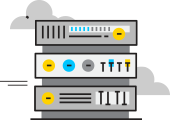A concise overview of Domain Name System (DNS) Zone Transfer.
The Historical Emergence of DNS Zone Transfer
DNS Zone Transfer originated from the fundamental need to maintain the consistency of DNS data across multiple DNS servers. Its initial mention dates back to the late 1980s, when the Internet was gaining traction. The need for a redundant, reliable system for DNS data was apparent, leading to the development of DNS zone transfers as a means of replication.
An In-depth Examination of DNS Zone Transfer
The DNS Zone Transfer is a mechanism where one DNS server passes a copy of a DNS zone, a portion of the domain name space in the Domain Name System, to another DNS server. This process is essential for maintaining consistency and ensuring the proper functioning of the DNS. DNS Zone Transfer is typically used in a multi-server environment, where changes in the primary server (also known as the master server) need to be propagated to secondary servers (slave servers).
The Zone Transfer process occurs over the Transmission Control Protocol (TCP) and utilizes port 53. Two types of transfers can happen – full (AXFR) and incremental (IXFR). The full transfer sends the entire DNS zone to the secondary server, while the incremental transfer only sends the changes since the last transfer.
Understanding the Inner Workings of DNS Zone Transfer
The zone transfer process begins when the secondary server sends a request to the master server. The request specifies whether it is a full or incremental transfer.
For a full (AXFR) transfer, the master server sends all the records of the DNS zone in a series of messages. For an incremental (IXFR) transfer, the master server only sends the changes since the last successful transfer, which reduces network traffic.
Upon receiving the zone data, the secondary server updates its records, maintaining synchronization with the master server. This process is crucial for the consistency and redundancy of DNS data.
Key Features of DNS Zone Transfer
- Redundancy and Resiliency: Zone transfers enable the replication of DNS data, ensuring that even if one server fails, others can continue to provide DNS services.
- Data Consistency: Zone transfers ensure all DNS servers in the network have consistent data, reducing the risk of serving outdated or incorrect DNS data.
- Traffic Optimization: The use of IXFR minimizes network traffic by only sending updated records rather than the entire DNS zone.
Types of DNS Zone Transfer
DNS Zone Transfers primarily fall into two categories, represented in the table below:
| Type | Description |
|---|---|
| AXFR (Full Zone Transfer) | In an AXFR transfer, the entire DNS zone database is copied from the master server to the secondary server. This is usually done when a new secondary server is set up or when the secondary server’s copy of the zone is inconsistent or corrupted. |
| IXFR (Incremental Zone Transfer) | In an IXFR transfer, only the changes to the zone since the last transfer are sent. This is more efficient and is typically used for routine updates. |
Implementing DNS Zone Transfer: Issues and Solutions
While DNS zone transfer is crucial for DNS operation, it can pose security threats, as an attacker could potentially request a zone transfer, gaining access to all records in a DNS zone. This issue can be mitigated by limiting zone transfers only to authorized servers.
Moreover, full (AXFR) transfers may generate considerable network traffic. This problem can be resolved by favoring incremental (IXFR) transfers, which only propagate changes instead of transferring the entire DNS zone.
Comparison to Similar Mechanisms
| Feature | DNS Zone Transfer | DNS Notify | DNS Query |
|---|---|---|---|
| Purpose | Replicates DNS data to maintain consistency. | Notifies secondary servers of changes in the zone. | Retrieves the IP address of a specific domain. |
| Traffic | Can be high for full transfers, low for incremental transfers. | Minimal, as it only triggers a transfer. | Minimal, as it only retrieves specific records. |
| Security | Potential security issue if not correctly configured. | Relatively safe. | Relatively safe. |
Future of DNS Zone Transfer
With increasing reliance on the Internet and digital services, ensuring the resilience and reliability of DNS data will remain crucial. Emerging technologies like blockchain could be integrated with DNS for decentralized and secure zone transfers. Further, standardizing DNS over HTTPS (DoH) could enhance the privacy and security of DNS transfers.
Proxy Servers and DNS Zone Transfer
Proxy servers, like those provided by OneProxy, act as intermediaries between clients and servers. While proxy servers primarily deal with user requests and responses, they can play a role in DNS operations, especially in DNS caching.
However, proxy servers do not directly participate in DNS Zone Transfers, which are strictly a DNS server function. Still, they can benefit indirectly from Zone Transfers, as the updated DNS data ensures that the proxy servers can effectively resolve domain names to their current IP addresses.
Related links
For more detailed information about DNS zone transfers, visit the following resources:




